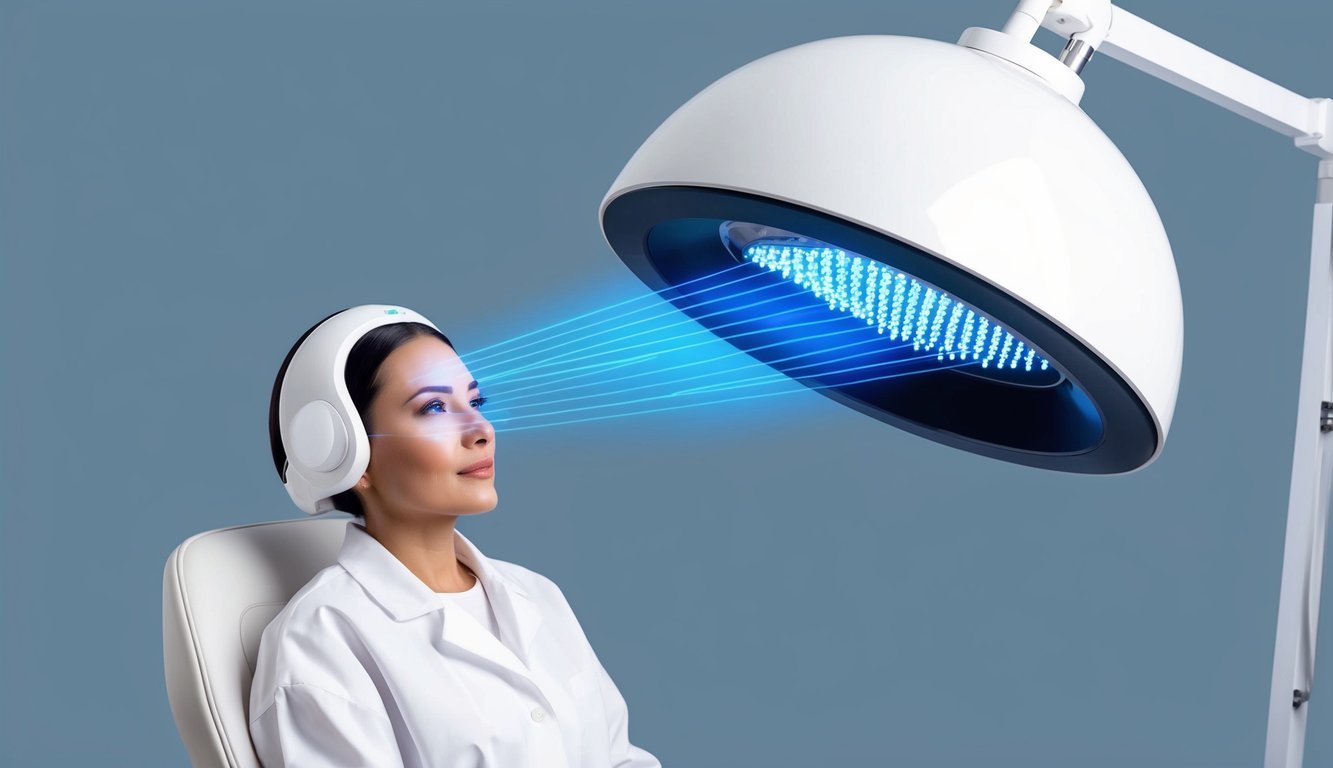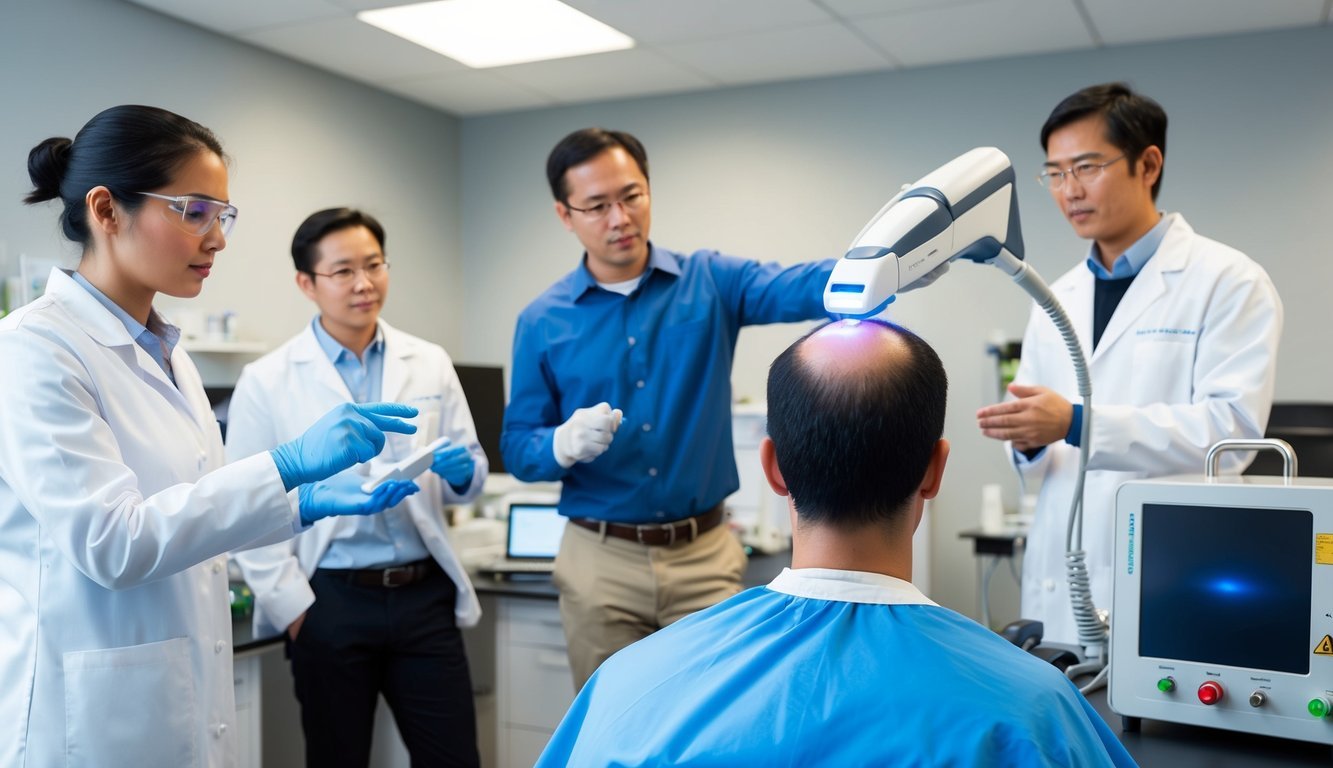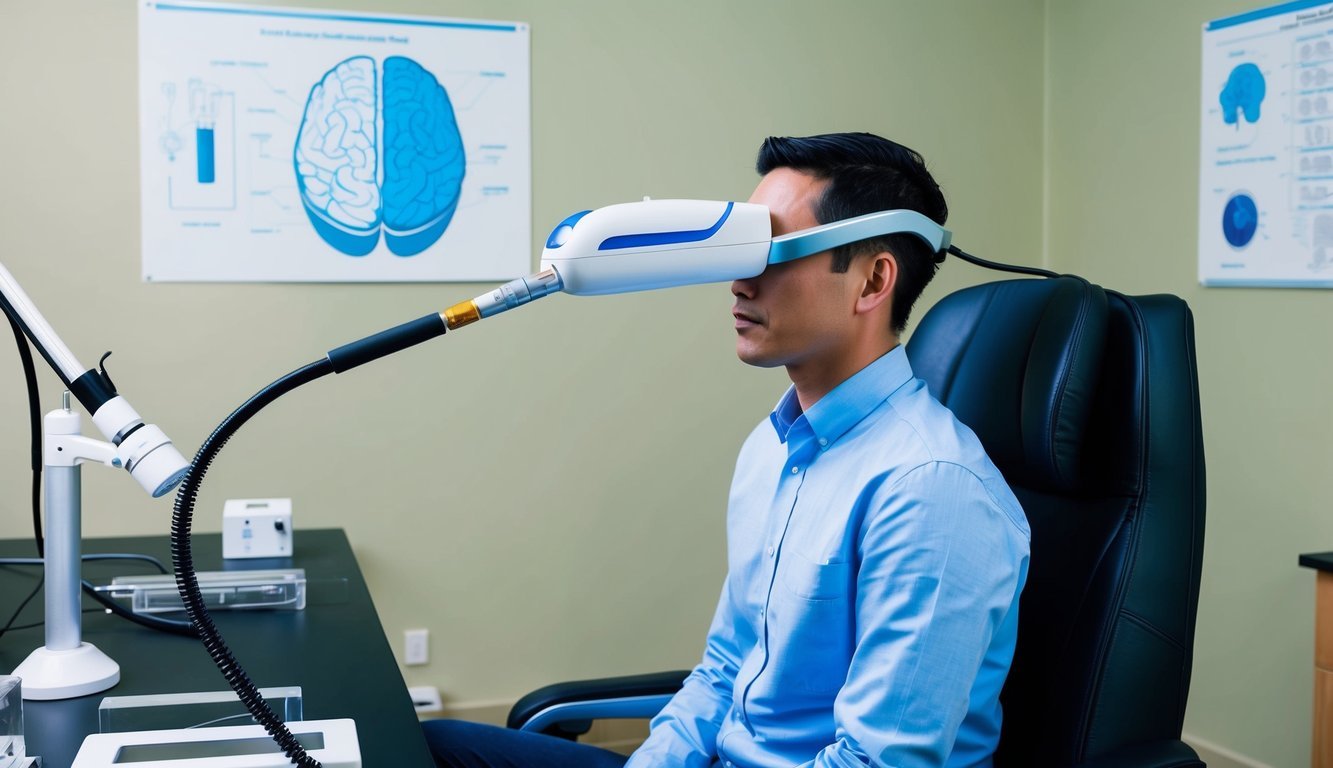PsychNewsDaily Publishers
100 Summit Drive
Burlington, MA, 01803
Telephone: (320) 349-2484
PsychNewsDaily Publishers
100 Summit Drive
Burlington, MA, 01803
Telephone: (320) 349-2484
Low-Level Light Therapy (LLLT) effectively stimulates hair growth by enhancing blood flow and energizing hair follicles, making it a popular treatment for hair loss conditions.

Laser hair restoration is gaining popularity as an option for those dealing with hair loss, especially conditions like androgenetic alopecia. Low-Level Light Therapy (LLLT) is at the forefront of this treatment.
Studies have shown that LLLT can stimulate hair growth by increasing blood flow and energizing hair follicles. This leads to improved hair density and health.
This gentle, non-invasive therapy uses specific wavelengths of light to target hair follicles, promoting cellular activity. It is often paired with other treatments for a comprehensive approach to combating hair loss. Many individuals have found success with LLLT, making it a noteworthy option in the world of hair restoration.
As more people seek effective solutions for hair loss, understanding the science behind treatments like LLLT is essential. The therapy has gained recognition for its ability to support hair growth safely and effectively. Whether one is just starting to notice thinning hair or has been experiencing hair loss for years, exploring LLLT might offer a hopeful path forward.

Hair loss is a common issue that affects many people. It can arise from various causes and present in different forms. The impact of hair loss extends beyond physical changes, often influencing emotional well-being.
The reasons behind hair loss can be diverse. Genetic factors play a major role, particularly in cases of androgenetic alopecia or male and female pattern baldness. This type often occurs gradually due to hormone sensitivities in hair follicles.
Other causes include medical conditions like alopecia areata, an autoimmune disorder that causes sudden hair loss in patches. Stress, poor nutrition, hormonal changes, and certain medications can also contribute. Recognizing these causes is crucial for effective treatment.
There are several types of alopecia, each with distinct characteristics:
Androgenetic Alopecia: A hereditary form affecting both men and women. It leads to thinning hair, often starting at the crown for men and the top of the head for women.
Alopecia Areata: This condition leads to hair loss in patches and can occur suddenly. It may affect any hair-bearing area and is often linked to autoimmune responses.
Telogen Effluvium: A temporary form resulting from stress or trauma, leading to widespread hair shedding.
Traction Alopecia: Caused by hairstyles that pull on hair. It commonly affects people with prolonged tight hairstyles.
Understanding these types helps in seeking appropriate treatment.
Hair loss can substantially impact emotional health. Many individuals experience anxiety and low self-esteem when noticing changes in their hair. It might lead to feelings of self-consciousness and avoidance of social situations.
For some, hair loss can trigger depressive thoughts, especially if they feel it affects their appearance and identity. This psychological distress highlights the importance of finding effective treatments, such as laser hair restoration, to support not just physical recovery but also mental well-being.

Low-Level Laser Therapy (LLLT) is an emerging treatment designed to help restore hair growth. This section explores how LLLT works, its role in stimulating hair follicles, and the different devices available for effective treatment.
LLLT, also known as cold laser therapy or soft laser therapy, uses low-level light to treat hair loss. It emits specific wavelengths of light that can penetrate the scalp without causing heat damage.
This therapy is non-invasive and painless. It is widely used for those experiencing androgenetic alopecia, commonly known as male and female pattern baldness. Many people turn to LLLT to enhance hair density and thickness safely.
Photobiomodulation is the key process behind LLLT’s effectiveness in promoting hair growth. When the light from LLLT devices hits the scalp, it stimulates the hair follicles.
The photons are absorbed by the cells, which boosts energy production in mitochondria. Increased energy helps hair follicles function better, leading to improved hair growth.
Moreover, LLLT enhances blood flow to the scalp, providing essential nutrients to hair follicles. This nourishment is vital for healthy hair growth and can help reverse hair thinning in many cases.
Various LLLT devices are available for users, ranging from laser combs to caps. Each device has its unique features:
| Device Type | Description | Benefits |
|---|---|---|
| Laser Combs | Handheld tools that users comb through their hair | Portable and easy to use |
| Laser Caps | Wearable caps that cover the entire scalp | Hands-free treatment for convenience |
| Soft Lasers | Often built into devices for broader scalp coverage | Comfortable and effective |
When selecting an LLLT device, it’s important to consider comfort, treatment time, and ease of use. Many people find success with regular use over several months, making it a popular option for hair restoration.

Research has provided solid evidence supporting the effectiveness of low-level laser therapy (LLLT) in hair restoration. Key studies have shown promising results, particularly in controlled settings, where various clinical trials validated its impact on hair growth.
Numerous clinical studies indicate that LLLT can stimulate hair growth effectively. For instance, a study involving participants with androgenetic alopecia showed significant improvements in hair count after regular LLLT sessions.
Participants experienced an increase in hair density, with results reported in both men and women. The studies utilized standard measurements like hair count and photographic analysis to track changes.
Moreover, trials often include a sham device to ensure results are due to LLLT and not placebo effects, underscoring its scientific validity.
Double-blind trials play a vital role in validating LLLT’s effectiveness. In these studies, neither the participants nor the researchers know who receives the actual treatment or the sham device. This design minimizes bias and ensures that results are reliable.
Results from these trials have shown statistically significant differences in hair regrowth between the LLLT group and the control group. Statistical analysis of data confirms that LLLT has a measurable impact on hair density over time, providing reassurance to those considering this option for hair loss.
Another important tool in these studies is the global photographic assessment. This method allows researchers to visually document hair growth progress throughout trials.
By taking standardized photos at various stages, experts can clearly see changes in hair density and overall appearance. This visual evidence complements the quantitative data from hair counts, presenting a comprehensive view of LLLT efficacy.
The combination of visual and numerical data strengthens claims about LLLT, making it an appealing choice for those exploring hair restoration options.

When considering low-level laser therapy (LLLT) for hair restoration, it is important to focus on the treatment regimen, potential adverse events, and patient satisfaction. These factors play a key role in achieving the best outcomes.
The treatment regimen for LLLT typically includes scheduled sessions using FDA-approved devices. Most protocols suggest using the device at least 2-3 times per week.
Factors to consider include:
It’s essential to monitor progress using the Norwood-Hamilton classification system. This helps in assessing improvement over time.
LLLT is generally considered safe, with few reported side effects. However, some patients may experience mild discomfort or temporary redness on the scalp.
Common adverse events include:
To ensure safety, clinicians should evaluate exclusion criteria, which might include certain skin conditions or sensitivities. Regular follow-ups can help address any concerns that arise.
Managing expectations is crucial for patient satisfaction in LLLT. Many users report gradual improvements in hair density and thickness.
Using a visual analog scale can help patients rate their satisfaction and track progress.
Key points that influence satisfaction include:
Patients should feel encouraged to communicate their feelings about the treatment process. This feedback helps improve their experience and outcomes.

Many people have questions about low-level laser therapy (LLLT) for hair restoration. This section answers common queries about side effects, recommended devices, costs, and expected results.
Low-level laser therapy is generally safe, but some people may experience mild side effects. These can include scalp irritation or a warm sensation during treatment. Serious side effects are rare, making LLLT a low-risk option for many.
Some popular LLLT devices include handheld lasers and laser caps. Brands like iRestore and HairMax are often recommended for their effectiveness and user-friendly designs. It’s good to read reviews and consult with professionals before choosing a device.
Yes, certain LLLT devices have received FDA approval for treating hair loss. This approval means that they have been tested for safety and efficiency. Users should look for FDA-cleared devices when considering options for hair restoration.
The cost of LLLT devices can vary widely. Handheld devices may range from $200 to $600, while laser caps can cost between $800 and $3,000. It’s essential to consider both the initial purchase and potential ongoing costs for treatment.
Many users report positive results with LLLT, including increased hair thickness and growth. Success rates can vary, with some studies showing a hair density increase of up to 43%. Results depend on individual conditions and how regularly users follow the treatment plan.
Before and after photos are often available on the websites of manufacturers and clinics that offer LLLT. These images can provide a visual idea of what to expect. Seeing real-life results can help people decide if LLLT is right for them.